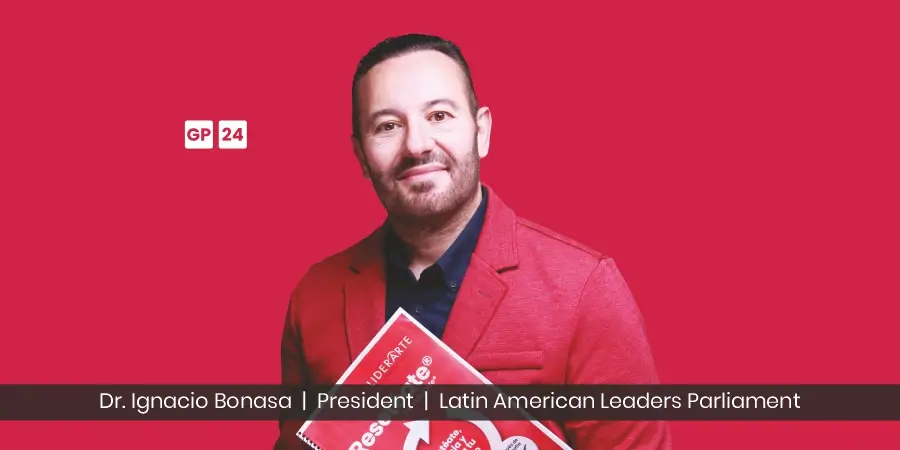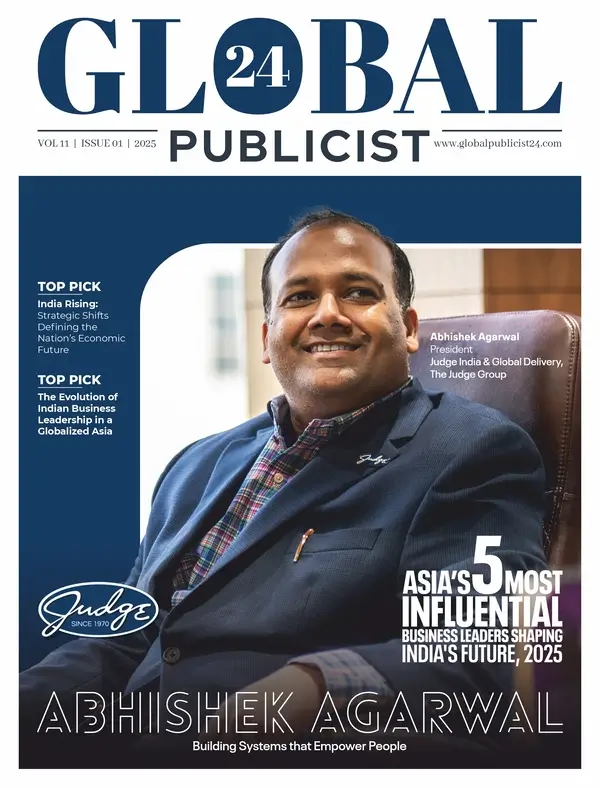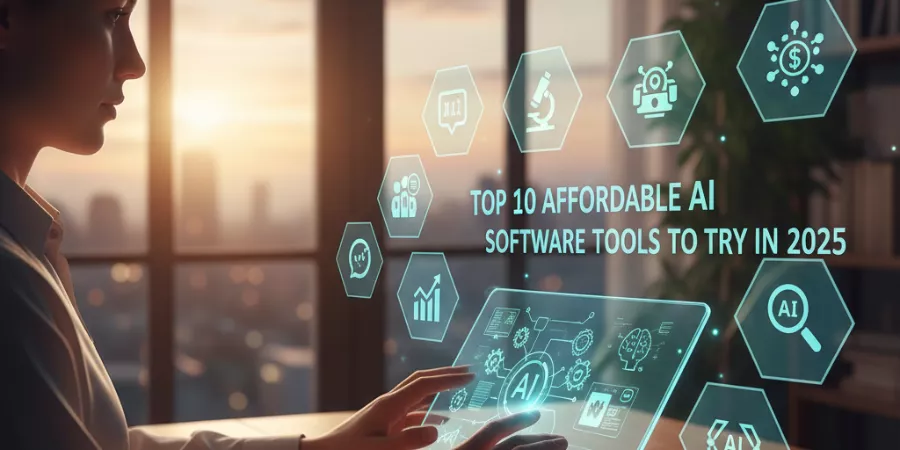Factories have a music of their own. Not the clang of metal, but the quiet rhythm of systems that breathe in data and breathe out decisions. Valves open. Lines adjust. A hundred moving parts look for balance so the whole can run a little cleaner, a little faster, a little safer. That is the kind of music Aanchal Gupta, Founder and CEO of Agents Stack listens for.
Her work finds the small hinges that move heavy doors. She enters where processes already exist and asks how they might waste less energy, lose fewer signals, and respond with better timing. The idea is simple. Efficiency is a form of stewardship. If you can make a system, see itself more clearly, you can help it serve more people with fewer blind spots.
That is the founding logic behind Agents Stack and the reason she prefers to build with customers inside their hardest problems. The score is written in outcomes. The craft is in hearing what each system needs in order to change without losing the beat.
The Spark Behind the Build
Early roles in consulting and large-scale transformation put Aanchal close to founders and CEOs who were trying to bend complex systems toward better outcomes. Work across Fortune 500 contexts in retail, utilities, energy, and financial services sharpened her instincts for where technology actually moves the needle.
That experience matured into a career focused on topline growth, operational efficiency, and cybersecurity across companies such as GE, Dow, and Cloudflare. After her most recent role, one pattern stood out. There was a clear unmet demand in Asia to drive operational and resource efficiency in industrial sectors with AI. The pull was not hypothetical. It was coming from customers who needed solutions that produced measurable gains. That signal became the genesis of Agents Stack.
She frames the decision plainly. The market did not need more generic platforms. It needed a partner that could sit inside a customer’s toughest problems and co-create solutions that worked with what already existed. The founder’s motivation was not to ship features into the void. It was to help systems run better, faster, and safer in the places where the economy actually lives.
Inside The Crucible
Aanchal’s first challenges were personal and cultural. She grew up in a middle-class family where the norm was a steady job. Bootstrapping a company meant resetting expectations at home and at work. It also meant transitioning teammates from fixed salaries based on effort to compensation that rewarded outcomes.
Building an AI transformation company layered on its own complexity. The team had to be large enough to solve multi-disciplinary problems and collaborative enough to function as a fully remote company. Those early months were a test of patience, conviction, and the capacity to change habits while shipping real work.
Aanchal’s leadership stance evolved inside those constraints. She keeps the vision simple. The aim is to drive meaningful impact for customers and for government stakeholders when they are part of the solution. Day to day, she avoids micromanagement. She gives specialists room to execute and steps in only when there are blockers that slow the mission. She is candid about the learning curve. She learns best from her own failures and believes most people do the same. The twist is that bootstrapping changes the cost of failure. As she puts it, there were dollars attached to every mistake. That reality forces sharper decisions about when to intervene and how to limit downside while preserving initiative.
Built With, Not For
Agents Stack distinguishes itself less by slogans and more by working methods. The company prefers to build with customers on their hardest problems instead of productizing in a vacuum. If a customer already has a partial solution that can be repaired, the team fixes it rather than forcing a replacement.
Aanchal also cultivates collaboration with other tech founders to raise operational efficiency where it matters. At the core is a belief that security and sustainability are not afterthoughts. They should exist by design at the data layer, where risks and externalities first accumulate. She notes that the senior team brings decades of relevant experience to this way of working.
Her language here is precise. “We try our best to build with customers for their toughest problems,” she says. “If a customer has a partial solution that can be fixed, we focus on fixing it.” The principle reads simple. The execution demands an engineering culture that can enter messy realities and improve them without breaking what already works.
Proof In Motion
The recent slate of work at Agents Stack shows how those principles travel. The team has focused on cyber resilience for the AI stack, acknowledging that AI systems inherit old attack surfaces while creating new ones. They have built tiered approaches to supply chain risk that account for trade tariffs and the uneven speed of regulatory change.
The team has also worked on real-time AI governance audits, an attempt to move compliance from a quarterly artifact into a living process that tracks how systems behave. The unifying thread is a bias toward interventions that improve reliability, transparency, and speed in the same move.
Leading Without Noise
Aanchal’s leadership style remains consistent. The goal is impact for communities served through paying customers or through government. She prefers to let people work to their expertise and steps in when problems stall progress. The philosophy values learning through failure, but it is bounded by the economics of a bootstrapped operation.
Aanchal is clear that every misstep has a cost, which means coaching is timed to protect the mission and the runway. “I normally leave the team to work as per their expertise and only step in when some help is needed,” she says. “I learn the best from my own failures, and I believe people mostly do the same.”
Designing Tomorrow’s Spine
Aanchal’s technology outlook is not about spectacles. It centers on the backbone systems that keep daily life functioning. She expects hardware devices with AI-native interfaces to become affordable for more people. That shift would expand digital literacy, create jobs, and elevate the quality and speed of information available to citizens.
In infrastructure, she sees near-term opportunities for AI to accelerate transformation in electricity transmission, water treatment, aviation, and energy efficiency. She also points to shipping and container operations, where energy consumption is heavy and gains compound. What unites these domains is the potential for real-time visibility into machines, materials, and processes. When visibility improves, the supply chain benefits from better signals on quality and price across geographies.
Aanchal anticipates a manufacturing tilt toward local production that creates jobs in more places. She expects land and labor rights to improve as trade and supply data makes poor practices harder to hide. She also connects energy storage and distributed solar to both logistics efficiency and the restoration of wildlife parks.
Beyond infrastructure, Aanchal sees workforce structure changing. Skills trading becomes more global. Design rises as a true differentiator because human-centric choices will decide adoption. Fractional roles gain ground over full-time jobs as people align work to passion and expertise. The office center fades while community spaces grow. The future of work looks more flexible, more distributed, and more accountable to outcomes.
Guardrails For Power
The biggest near-term challenge is not a particular technology. It is education about AI risk and governance. Aanchal groups the risks into three layers. There is cybersecurity, where adversaries adapt rapidly. There are social impacts, where bias, exclusion, and misinformation can scale quickly. There is climate and energy use, where the compute behind AI has material costs.
Aanchal argues that AI can automate almost anything, which makes choices more important. Teams should prioritize foundational systems such as health, finance, water, electricity, and gender parity. Those domains produce real productivity gains for people and for the broader economy. “It is important to address the basic challenges,” she says, and to favor projects that deliver genuine return on investment.
What Endures
When she looks at the years ahead, Aanchal is most energized by problems that connect sustainability and governance to growth. In 2025, she wants to push on land and labor sustainability, and on social risk alongside cyber and AI governance.
Beyond that horizon, she expects AI-native interfaces to evolve into drag-and-drop and conversational modes that lower barriers to collaboration across language and culture. If that happens, more people can contribute to building infrastructure and products that are sustainable in both design and outcome. The aim is not novelty for its own sake. It is the steady creation of economic value that does not mortgage the future.
















